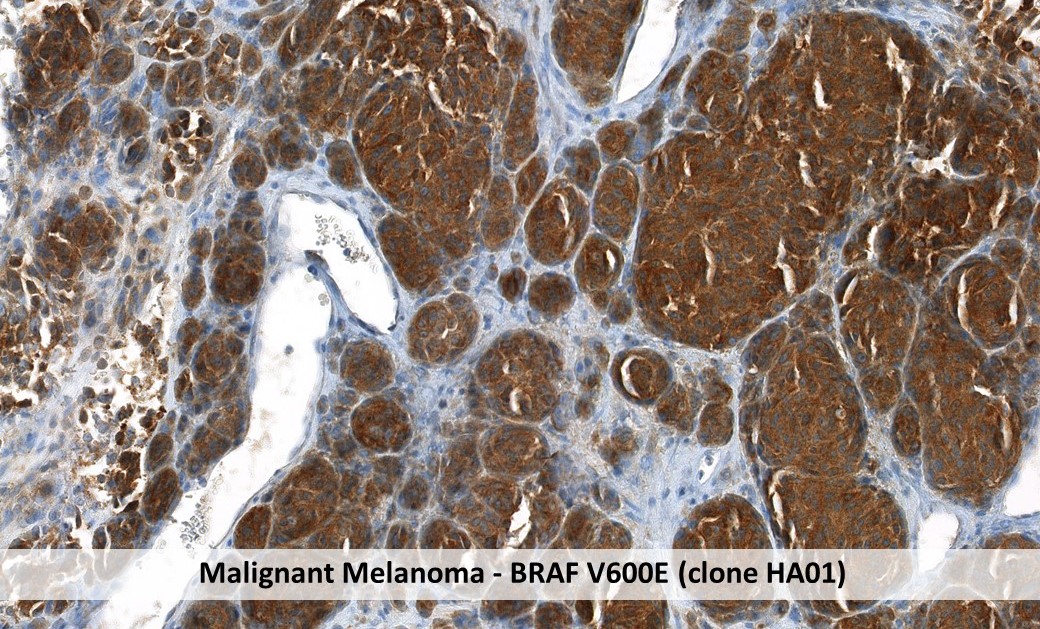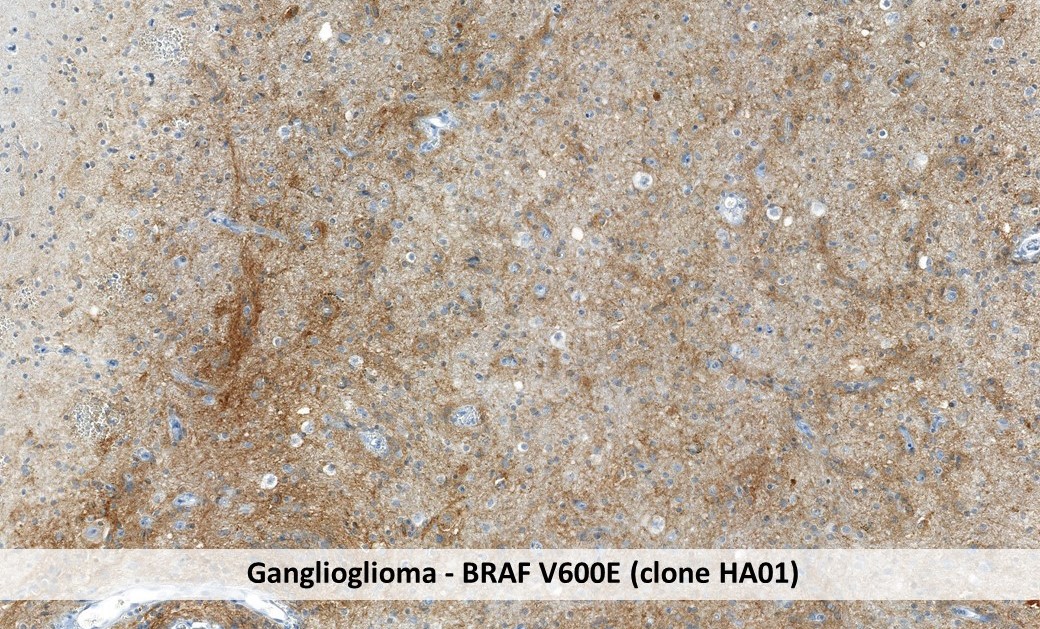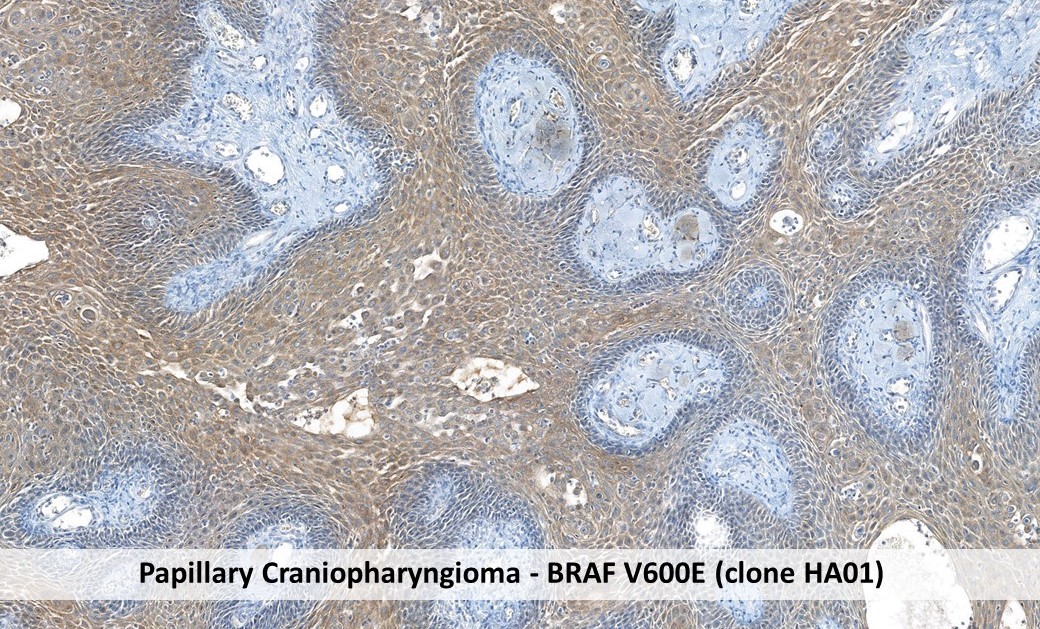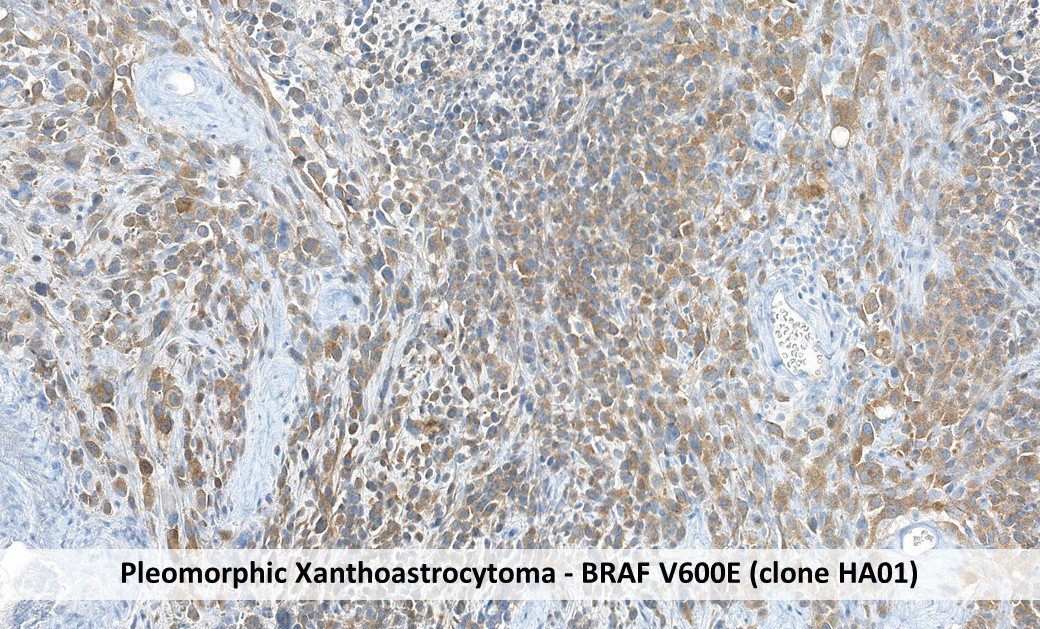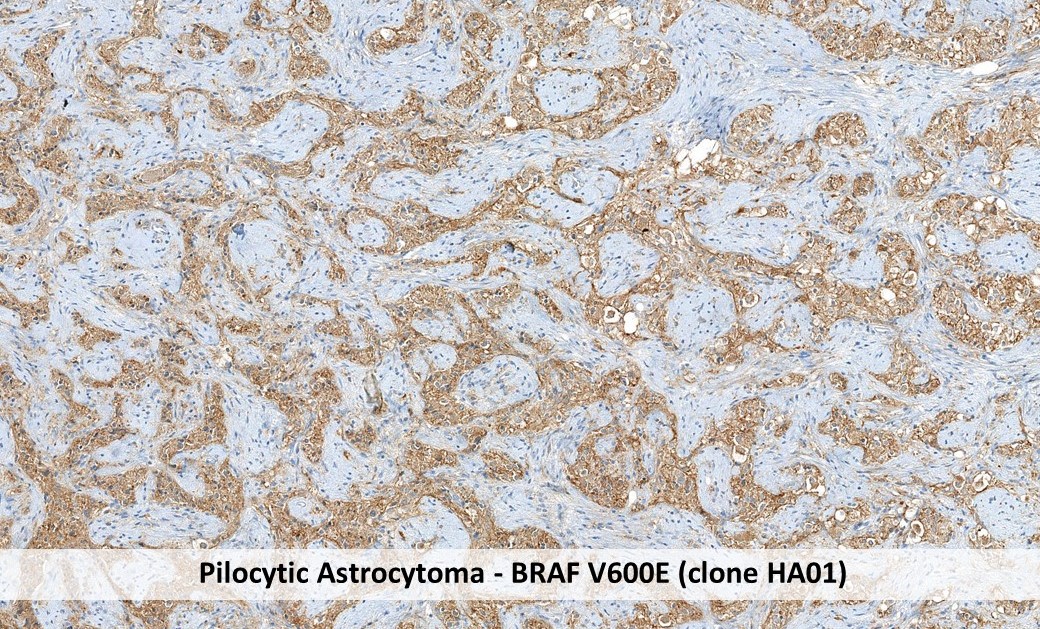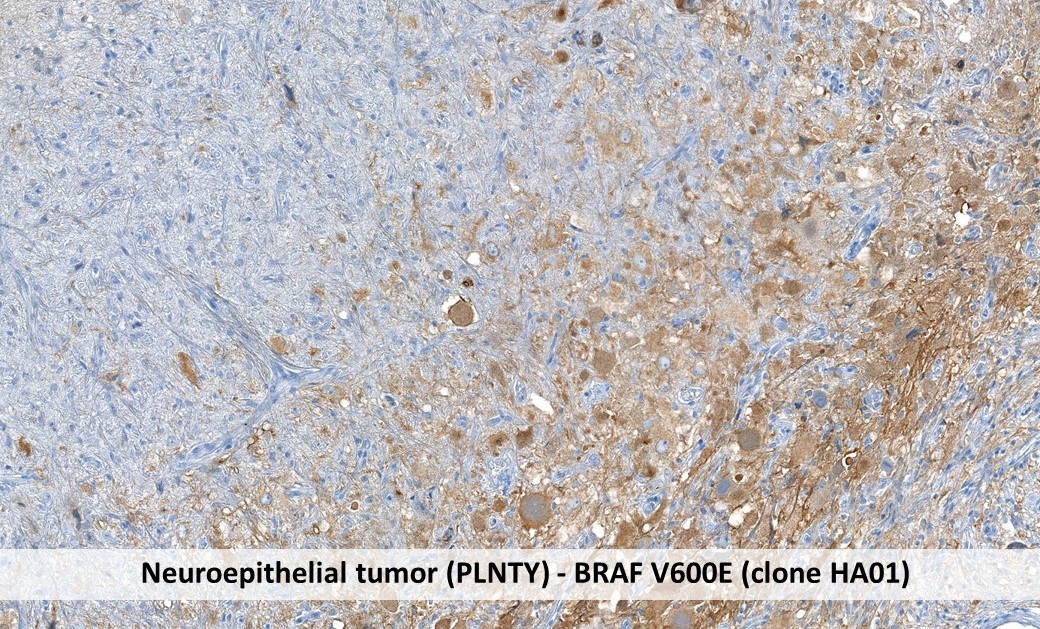Anti-BRAF V600E (Hu), ms clone HA01
- Bilder (6)
| Artikelname: | Anti-BRAF V600E (Hu), ms clone HA01 |
| Artikelnummer: | DNA-DIA-HA01 |
| Hersteller Artikelnummer: | DNA-DIA-HA01 |
| Alternativnummer: | DIA-HA01,DNA-DIA-HA01 |
| Hersteller: | dianova |
| Wirt: | Mouse |
| Kategorie: | Antikörper |
| Applikation: | IHC |
| Spezies Reaktivität: | Human |
| Immunogen: | Synthetic peptide, amino acid sequence CKPIIIGHHAYGD |
| Alternative Synonym: | BRAF, BRAF V600E |
| Regulatory Status: RUO |
Clone HA01 reacts specifically with the BRAF V600E point mutation in tissue sections from routine formalin-fixed paraffin embedded human tumors (IHC FFPE). This antibody has been validated for the identification of BRAF V600E positive cells in diverse human tumor tissues with an additional focus on neuropathological tumor tissues selected according to WHO guidelines.
BackgroundBRAF V600E is a well-established oncogenic driver mutation with broad clinical implications. Since first studies of BRAF mutations in cancers 2002 (1), BRAF V600E has evolved into a critical diagnostic, prognostic, and predictive tumor marker. BRAF has been shown to be mutated in various types of cancers including malignant melanoma (~50%), papillary thyroid cancer (~45%), colorectal cancers (~10%) and has also been identified in ovarian, breast, and lung cancers (1,2,3). Several primary CNS neoplasms harbor a BRAF V600E mutation, e.g. several pediatric low-grade gliomas (4,5): ~60% of pleomorphic xanthoastrocytomas (PXA), 20–60% of gangliogliomas (GG), and roughly 10% of pilocytic astrocytomas. Physiologically, BRAF acts as a serine-threonine protein kinase and is a member of the RAF kinase family playing an important role in the RAS-RAF-MAPK signaling pathway, which regulates cell survival, proliferation and differentiation (6). 90% of oncogenic mutations in the BRAF gene are a single V600E substitution within the kinase domain and result in sustained kinase activity, constitutively activating the MAPK signaling pathway which leads to carcinogenesis (7,8).
Instructions for UseImmunohistochemical (IHC) staining of standard formalin-fixed paraffin sections: Heat induced epitope retrieval (HIER) is required. Different detection techniques can be used: Indirect immunoenzyme labeling with a secondary antibody conjugate, biotin/(strept)avidin-based detection, soluble enzyme immune complex or polymer-based detection. To detect antibody, follow the instructions provided with the particular visualization system. The antibody is suited for IHC staining using automated platforms (Ventana: CC1 pretreatment / Optiview detection). Use the antibody at 1:100 -1:200 dilution.
References
Product Specifications
|
| Klonalität: | Monoclonal |
| Klon-Bezeichnung: | HA01 |
| Isotyp: | IgG2b |
| UniProt: | P15056 |
| Formulierung: | 0.05% NaN3, 2% BSA, in PBS (pH 7.4), lyophilisate, purified antibody (from culture supernatant) |
| Lagerung: | 2-8°C |
| Target-Kategorie: | BRAF V600E |
| Antibody Type: | Monoclonal Antibody |
| Application Verdünnung: | Histo-/Cytochemistry 1:100 |

